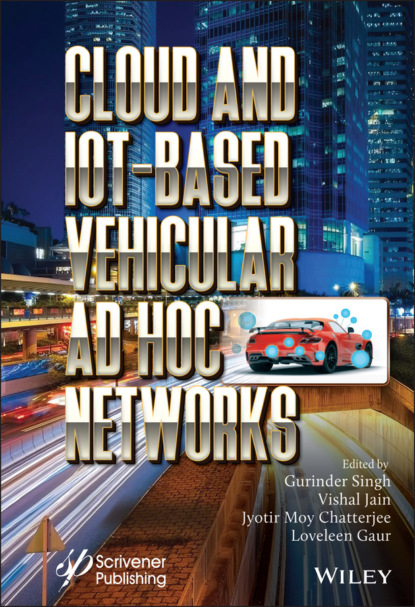resources (services) as per the IOV user’s requirements. In a 5G-VANET milieu, the service discovery implementations include the VANET users and service providers.
Service Consumers (SC) or VANET users: Service consumers request for the services.
Service Providers (SP): SP publishes its services in the registry for access to SC.
2.4.1 Service Discovery Methods
The literature distinguished three types of service discovery methods such as,
1 Push-based Service Discovery (PUSD)
2 Pull-based Service Discovery (PLSD)
3 Hybrid-based Service Discovery (HSD)
PUSD: In PUSD, the service provider disseminates the services to all vehicles in the VANET milieu, does not wait for the requests from the VANET users. The PUSD is a proactive mode [15–22].
PLSD: In PLSD, the vehicle user transmits a request towards the service provider to find the specific service. The PLSD is a reactive mode [23–25].
HSD: The HSD uses both the PUSD and PLSD. HSD uses both proactive and reactive mode [26–29]. Table 2.1 depicts the characteristics of service discovery methods.
2.4.2 A Framework of Service Discovery in the 5G-VANET Milieu
Figure 2.2 shows the framework of service discovery in the 5G-VANET milieu. A network layer is incorporated with the service unit and routing unit. The service unit processes the discovery mechanism. The discovery mechanism is the key mechanism in service discovery that discovers the desired services for each vehicle user as per their requirements. The routing unit processes the routing task, such as route discovery and hand-off.
Table 2.1 Characteristics of service discovery methods.
| Characteristics | PUSD | PLSD | HSD |
| Mode | Proactive | Reactive | Proactive and reactive |
| Architecture | Centralized | Centralized | Centralized |
| Routing | Broadcast | On-demand routing | Unicast/Broadcast/ Geocast |
| Mobility | Periodic update | Not required | Periodic update/event-driven update |
| Discovery | Spatial distribution | Context-based/Spatial distribution | Context-based/Spatial distribution |
| Bootstrapping | Broadcast | Geographical Routing/Computationbased | Geographic dissemination/Broadcast |
| Accuracy | High | High | High |
| Scalability | Yes | No guarantee | Yes |
| Reliability | Yes | Yes | Yes |
Table 2.2 illustrates the difference between the routing unit and service unit. Both the routing and service units come under the discovery agents but they differ in the form of processing behavior of an approach, service discovery works on the service line to accomplish the effective services to the users and the route discovery is majorly spotlight on the defining route from vehicle user to the target for smooth transversal between nodes. The two units such as, routing, and service are used for the overall improvement of the framework in the form of operational and conceptual deportment.
The routing unit protocol is distinguished based on their characteristics are Table-Driven Routing Protocol (TDRP), On-Demand Routing Protocol (ODRP), and Hybrid Routing Protocol (HRP) [30]. The definition of routing unit protocols based on their characteristics is as follows:
Figure 2.2 A framework of service discovery.
Table 2.2 Comparison of routing unit and service unit.
| Characteristics | Routing unit | Service unit |
| Protocols | Routing protocols | Service protocols |
| Leaned on | Process-Oriented | Resource-Oriented |
| Discover | Finds the superlative path | Finds the superlative services |
| Parameter for Discovery | Distance, energy, cost, and so on. | Accuracy and efficiency. |
| Mechanism | Route discovery mechanism | Service discovery mechanism |
| Information | Routing information | Service information |
| Layer | Network layer | Network layer |
| Protocols | PUSD, PLSD, and HSD [13–27]. | TDRP, ODRP, and HRP [28]. |
| Reliability | Yes | Yes |
TDRP: This protocol reads the topological information continuously and updates it in the routing table.
ODRP: This protocol reads the topological information when it requires.
HRP: Hybrid uses the features of both TDRP and ODRP.
2.5 Service Discovery Architecture for 5G-VANET Milieu
The few important network characteristics to be considered while designing the service discovery architecture for 5G-VANET are dense, mobility, scalability, collision, failure, congestion, reliability, service availability, and latency. The services provided by the service discovery mechanism are classified into two types such as fixed services and moving services. The definitions of fixed and moving services are as follows:
Fixed Services:
